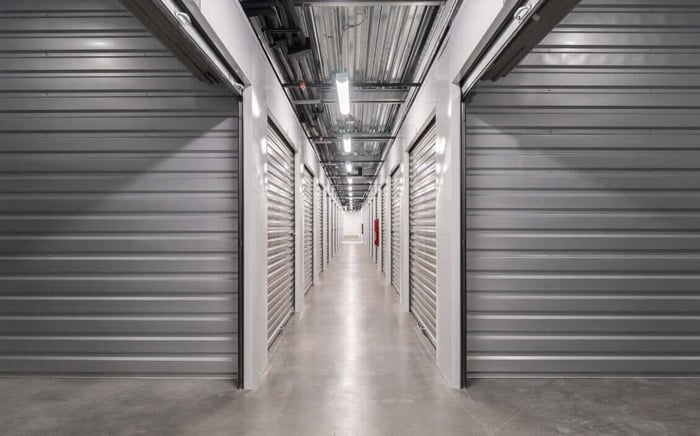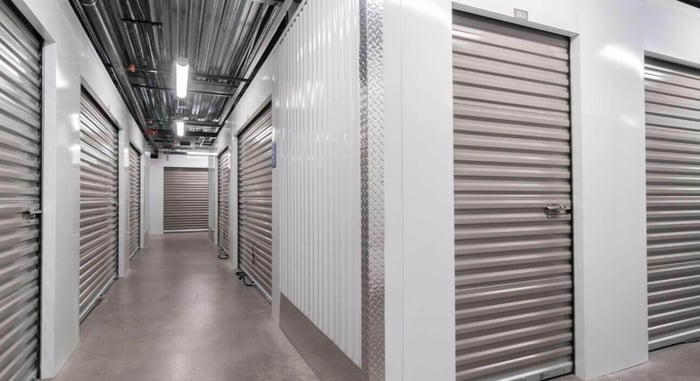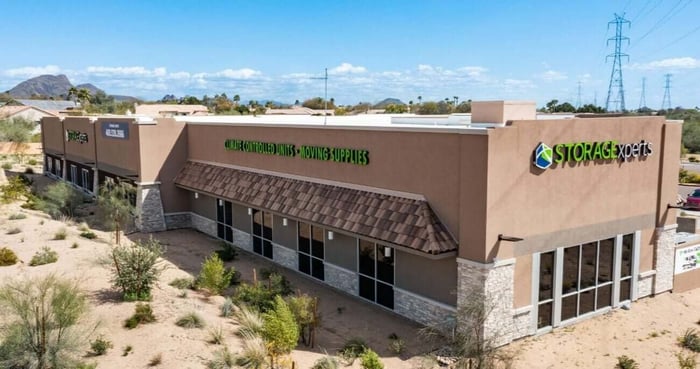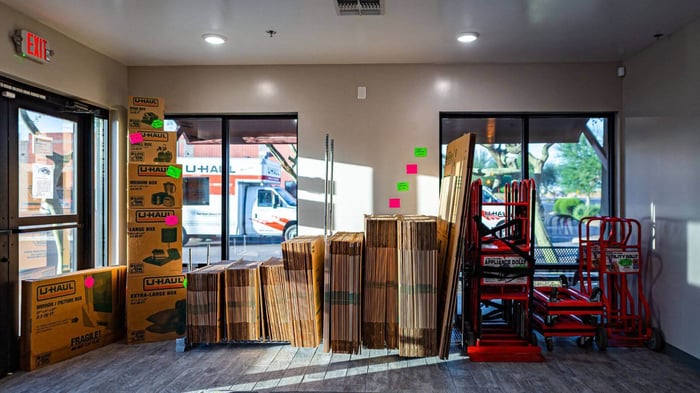Choosing the proper storage unit is more than an afterthought—it's a strategic decision that impacts the protection, access, and longevity of your belongings. Whether you're safeguarding sensitive electronics, a vehicle, tools, furniture, collectibles, or even a boat, understanding the differences and advantages of indoor versus outdoor storage spaces is the first step to a smart storage solution.
From rental terms and duration to location and storage facility features, every factor matters in making the best decision. It's not just about storing things; it's about finding the right fit for your storage priorities.
This in-depth guide explores how to match your needs, space, budget, and climate preferences with the perfect self-storage option at STORAGExperts—and the long-term benefits each option can offer.
The Fundamentals of Storage Type and Facilities
Storage facilities offer two primary types of units:
- Indoor storage units inside a secure building
- Outdoor storage units (or drive-up units) in standalone buildings
The right unit depends on what you're storing, how often you'll visit, and how sensitive your items are to environmental factors—including the nature of what's being stored, the amount of storage space required, and whether your belongings are better suited for an outside or more protected storage environment. You'll also want to consider the pros and cons of each option, from front-facing accessibility to how storage solutions function globally.
Definition of Key Storage Options
- Indoor storage: Secured within a larger building, often with hallways, controlled-entry access, and climate-regulated areas.
- Outdoor storage: Ground-level units accessible via a drive-up entry, resembling personal garages—ideal for large equipment, vehicles, or seasonal items.
Across cities, these storage solutions come in a range of sizes, features, and security measures, allowing you to tailor your storage to your specific priorities.
Inside the Building: Why Indoor Units Are Ideal for Sensitive Items
Climate Control and Weather Protection
Indoor units excel at regulating temperature and humidity, providing a stable environment for electronics, artwork, collectibles, instruments, and wooden furniture. These spaces shield against heat, rain, snow, wind, and dust—elements that can warp, corrode, or degrade your possessions over time. There's a significant risk of damage when these factors are overlooked, so having accurate information about indoor protection is crucial to preserving what matters most.
Enhanced Security and Supervision
With layered security features, including surveillance cameras, secure door access, staff oversight, and sometimes even alarm posts, indoor facilities offer superior protection. This level of care helps deter theft, pests, and unauthorized entry.
Convenient Loading and Organization
Thanks to stable interior hallways, elevators, and multiple floor levels, indoor units support safe and efficient loading and storage room organization. This is ideal for storing many small boxes, tools, or gear that require careful organization.
Ideal Use Cases
- Long-term storage of electronics, fragile items, or important documents
- Climate-sensitive equipment like medical appliances
- Collections prone to damage from temperature fluctuations
Drive-Up Convenience: When Outdoor Units Make More Sense
Direct Access for Large or Heavy Items
Outdoor units, often referred to as Drive-up Storage Units, allow drive-up access and easy loading for bulky furniture, vehicles, boats, and large appliances. With doors opening directly onto your unit, moving becomes faster and more efficient—ideal for frequent access or business use.
Budget-Friendly, Spacious Solutions
Generally less expensive, outdoor units offer generous space that accommodates vehicles, tools, or bulk storage. For those prioritizing space, cost, and quick access, they strike the perfect balance.
Best Uses
- Auto enthusiasts or boat owners storing vehicles, trailers, or gear
- Contractors, landscapers, or hobbyists storing bulky tools and equipment
- Short-term or seasonal storage needs with frequent loading in and out
Weighing the Trade-Offs: Making the Right Choice
Climate and Exposure
- Indoor: Protects from all weather conditions, dust, exposure, and humidity
- Outdoor: Vulnerable to heat, rain, snow, wind, and temperature fluctuations
Security Differences
- Indoor facilities often include gate entry, coded door access, and monitoring staff
- Outdoor units typically offer basic surveillance cameras with variable control over gate access
Size and Space Requirements
Both types offer a variety of sizes—from small, single boxes to large spaces for multiple vehicles—but outdoor options usually accommodate wider and taller items.
Accessibility and Convenience
- Indoor: Great for urban dwellers with timed access, interior corridors, and elevator retrieval
- Outdoor: Excellent for anyone needing quick drive-up entry without navigating a building
Cost Considerations
Outdoor units are more affordable, but you may need to pay extra for indoor comforts like climate-controlled storage units, enhanced security, and convenience.
Match Your Priorities with the Best Storage Solution
Here's how to align your decision with what matters most:
- Item Type and Sensitivity
- Highly sensitive to temperature, humidity, or dust? Lean toward indoor storage.
- Storing vehicles, boats, or bulky gear? Outdoors provides better ease and value.
- Frequency of Access
- Regular visits or retrieval of heavy items? Outdoors are ideal.
- Need occasional access to valuable or fragile items? Indoor with staff support works well.
- Security Requirements
- High-value or sentimental items benefit from tighter indoor security measures.
- Less critical possessions stored outdoors fare well with basic security.
- Space and Size Needs
- Smaller spaces are safe indoors, while larger units are ideal for storing oversized belongings outdoors.
- Budget Constraints
- If cost is a concern, outdoor units offer more for less—ensuring adequate weather protection.
- Climate and Environment
- In regions with harsh weather, indoor units are better for long-term preservation.
Smart Packing and Organization Tips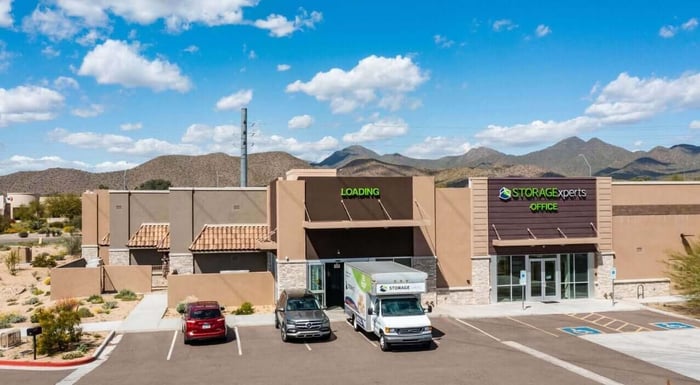 Outdoor storage units at STORAGExperts in Scottsdale Arizona offer convenient drive-up access for storing boats furniture and large appliances
Outdoor storage units at STORAGExperts in Scottsdale Arizona offer convenient drive-up access for storing boats furniture and large appliances
 Outdoor storage units at STORAGExperts in Scottsdale Arizona offer convenient drive-up access for storing boats furniture and large appliances
Outdoor storage units at STORAGExperts in Scottsdale Arizona offer convenient drive-up access for storing boats furniture and large appliancesWhether of indoors or outdoors, keep these must-have packing materials for safe and stress-free storage in mind:
- Boxes: Use sturdy, uniform ones with clear labels.
- Mattress and furniture covers: Shield against dust and pests.
- Bubble wrap and padding: Wrap delicate electronics, artwork, and instruments.
- Pallets: Off the floor to reduce humidity damage.
- Tarps and plastic bins: Help seal out moisture in outdoor units.
- Pest control: Use mothballs or traps to deter critters.
- Climate monitoring tools: Track temperature and humidity if needed.
Proper packing extends the life of your belongings—even in less climate-regulated spaces.
Extra Security Measures You Can Add
Ensure added peace of mind with these improvements:
- Personal lock: Heavy-duty, weatherproof padlock for every unit.
- Padlock protecting latch: Prevents bolt cutters.
- Surveillance monitoring: Check for cameras covering the area surrounding your unit.
- Security lighting and fencing enhance deterrence against theft or vandalism.
- Facility staff presence: Frequent patrols and check-ins by staff build accountability.
Final Thoughts and Your Next Steps
There's no one-size-fits-all – the best solution depends on your items, space needs, budget, and required protection. With STORAGExperts, you can confidently choose whether to go indoors or outdoors:
- Indoor units provide reliable shelter from the elements, high-level security, and organizational perks—perfect for storing sensitive items.
- Outdoor units deliver convenience, affordability, and easy loading power—ideal for large, frequently accessed belongings.
Conclusion: The Ideal Unit Is the One That Fits
Selecting the proper storage solution is about balancing climate control, security, space, and accessibility. STORAGExperts offers self storage options in various cities, allowing you to choose the unit that exactly fits your belongings, needs, and budget. With our expert guidance, climate control choices, packing tips, and secure facilities, you can enjoy stress-free storage today—and tomorrow.
Visit STORAGExperts to compare locations, sizes, and features and start organizing smarter and with confidence.
Frequently Asked Questions
1. Can I switch from an outdoor storage unit to an indoor one later?
Yes, most storage facilities, including STORAGExperts, allow you to upgrade or change units as your needs evolve. Availability depends on unit sizes and location.
2. What kind of insurance do I need for a storage unit?
While STORAGExperts may offer tenant insurance, it's smart to check if your homeowner's or renter's policy covers stored belongings. Insurance protects against theft, weather damage, and other potential risks.
3. Are there restrictions on what I can store in a storage unit?
Yes. Most facilities prohibit the storage of hazardous materials, perishables, weapons, and illegal items. STORAGExperts provides a clear list of prohibited contents when you sign your rental agreement.
4. How secure are outdoor units compared to indoor ones?
Outdoor units feature basic security measures, including gate access and surveillance cameras. Indoor units often include additional features such as climate control, monitored entrances, and restricted access within buildings.
5. What are the access hours for indoor vs. outdoor units?
Access hours can vary. Outdoor units usually offer extended or 24/7 access. Indoor units might have more limited hours due to building access policies or staffing schedules.
6. Do I need climate control in mild climates?
Even in mild climates, humidity and temperature fluctuations can cause damage to electronics, artwork, and wooden furniture over time. Climate-controlled indoor units provide year-round protection regardless of outside conditions.
7. How far in advance should I reserve my storage unit?
It's best to reserve your storage unit 2–4 weeks in advance, especially during peak seasons (spring/summer). STORAGExperts offers online reservations and timelines with the flexibility to match your move-in date.
8. Can I store a motorcycle or ATV in an indoor storage unit?
Yes, but ensure the unit size, ventilation, and facility rules permit it. Outdoor or drive-up units are typically better suited for vehicle storage, although indoor options may be suitable for smaller models.
9. What utilities or amenities are available in indoor units?
Some indoor units offer lighting, electrical outlets, and elevators for multi-story buildings. Amenities vary by location, so contact STORAGExperts for specific facility features.
10. How do I prepare furniture or electronics for long-term storage?
Use climate-safe packing materials, elevate items off the floor, and disassemble larger pieces to prevent damage. Wrap electronics and wooden furniture in breathable covers, and avoid plastic that can trap moisture.

